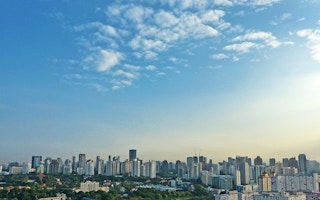In a bid to make Singapore homes more sustainable and comfortable, the city-state’s Building and Construction Authority (BCA) on Wednesday announced an updated set of criteria for new residential buildings to attain the Green Mark certifications.
Launched at the International Green Building Conference 2016 held in Singapore’s Sands Expo and Convention Centre from September 7 to 9, the revised scheme places a greater focus on the well-being and behaviour of occupants than the current version, which has been in effect since January 2013.
The new criteria for the Green Mark—the national certification for green buildings—will be implemented on a pilot basis for one year and fine-tuned based on input from the industry before it is fully integrated into the certification requirements.
While the current scheme focuses heavily on energy and water efficiency, environmental protection, as well as indoor environment quality, the new scheme covers five more holistic categories: climate responsive design, building energy performance, resource stewardship, smart and healthy buildings, and advanced green efforts.
New features of this revamped structure include a greater emphasis on passive design, where buildings and landscapes maximise the use of natural sunlight, ventilation, and other environmental factors to keep occupants comfortable.
Buildings must now also integrate greenery into indoor spaces, to help align Singapore’s built environment with the country’s aspirations to be a “City in a Garden”. Preserving the natural landscape in the development’s outdoor spaces and creating waterscapes for residents to enjoy will earn developers more points.
The new criteria require the external surfaces of buildings to minimise heat gains and losses. Buildings cannot exceed a prescribed maximum “residential envelope thermal transmittance value” to gain Green Mark certification.
Building designers can gain points for including features that encourage occupants to adopt more sustainable lifestyles.
These include providing home energy management systems in each apartment so that occupants can track their power consumption and change their habits accordingly, providing informational material on the building’s green features to residents, and advising people on how they can help reduce the development’s environmental impact.
In addition, buildings should be fitted with the most energy-efficient air conditioning systems available, so that homeowners enjoy greater savings on their electricity bills.
As an added measure to prioritise occupant well-being, the new guidelines award buildings extra points for adopting universal design features — that is, fixtures such as lamps, railings, and easily navigable layouts that make the built environment accessible to people with disabilities, the elderly, or young children.
BCA is currently working with the Housing and Development Board - Singapore’s public housing agency - and private developers to identify upcoming building projects that can participate in testing this pilot.
Since BCA’s Green mark scheme was introduced in 2005, BCA has certified more than 2,800 buildings in Singapore. Almost a third of SIngapore’s built area is now Green Mark certified, and the agency says it is on track to achieving its target of greening 80 per cent of all buildings in Singapore by 2030.
Eco-Business is producing a special e-newsletter featuring stories on the proceedings at IGBC 2016, kindly supported by City Developments Ltd and the Building and Construction Authority. Sign up to receive the newsletter here.















